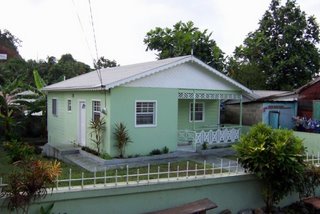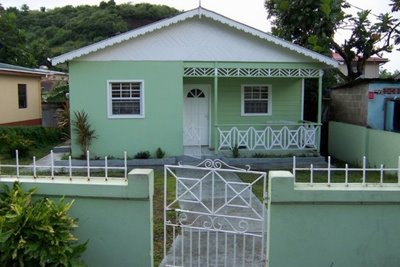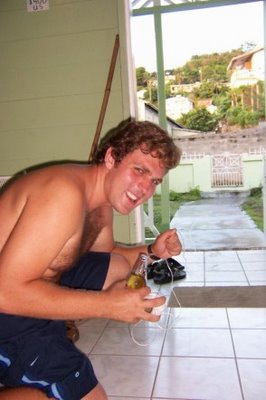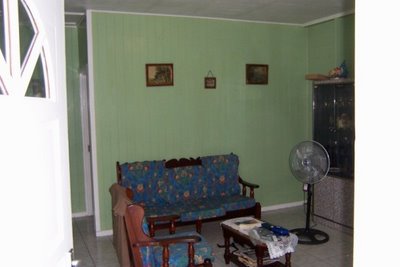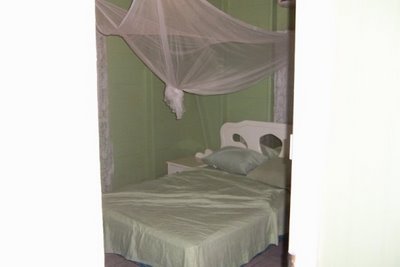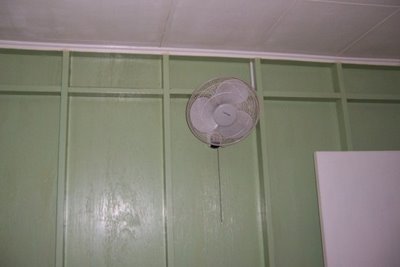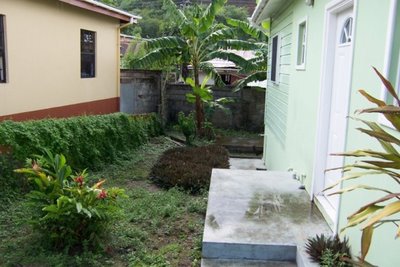AD and Jennifer, don't they look like a happy couple, that is one happy man there.

The Big Spread!


Tam and Alesha, one of the few men who can sport a pink polo and look good.


Two Hoosiers.


A chronicle of a Peace Corps Volunteer nicknamed "Big Country" who served in the Eastern Caribbean on the island of St. Lucia.







"Sea Moss Project"
First of all what is Sea Moss? Sea Moss is a form of seaweed renowned for its nutritious and energy-giving properties. Of the hundreds of Caribbean varieties of sea moss, the two most popular in
Sea Moss is probably one of the easiest self sustaining businesses to start. Essentially Sea Moss is grown on 100-200 ft ropes that are 150-300 feet out from the shore. The rope lines float just below the surface of the water by attaching large plastic bottles to the rope at 10ft intervals which also act as marker for boats to avoid. The Sea Moss ropes are anchored below to the ocean bottom using very large stones rapped in old fishnet and steal bands attached to the rope. Sea Moss is grown by purchasing a starter stock. The moss is attached to the 3 ply rope by twisting the rope to separate the 3 strands and then the Sea Moss is pinned between. The starter pieces of moss are placed at 8ft intervals. After about 6-8 weeks the entire line will be covered in Sea Moss.
See the below picture for the concept.
The sea moss is then harvested leaving enough on the rope for it to regenerate. It is then dried and bagged and sold individually to people and as a main ingredient to drink companies, candles makers, and food processors. The going price for one large bag of dried sea moss is $50EC (about $18.65US) which is considerable.
I have identified 2 young unemployed men and another entrepreneurial man (he sells sea shells to passing yachts’ from his Kayak) that are excited to start the project.
The Sea Moss will be grown in Anse la Liberte beach that has a protected area of water
See the below picture of Anse la Liberte.
We will raise sponsorship locally to purchase the following materials to begin the self sustaining project of Sea Moss Farming. ($1US dollar equals $2.68EC.)
Other successes on the island with Sea Moss farming: Phillip Simeon from another village on the eastside island has been a fisherman most of his life, but several years ago he realized he could get a better income from farming Sea Moss. In another village called Praslin a group of women have decided to cultivate Sea Moss even though its considered a male activity. Now they've taken the business a step further. Greta Joseph recruited other women and they eventually started their own company selling a drink made with boiled and strained sea moss, sugar, and fruit. The demand for this natural energy drink has increased to the point where the women are considering bringing in more people to help with the processing.
“Rabbit Project”
The main project I am working on in
The Canaries Creole Pot provides economic stimulus and employment for 10-12 vendors whom demographically are single unemployed mothers who look to this event as a valuable means of support. The featured dish of the Canaries Creole Pots is traditional Creole Rabbit Stew cooked in red wine and coconut cream. As our signature dish our vendors spend considerable amount of their money purchasing the rabbit and are finding it very difficult to turn a profit when the rabbit is $16EC per pound.

My proposals is to think local and grow local and most importantly to bring the cost of the rabbit down so these ladies can make a profit. A profit that can go directly back to their families to pay for costs such as school books and uniforms for their children. This Rabbit Raising project will greatly enhance the capacity of the Canaries Creole Pot vendors as they strive to develop and grow the event by subsidizing the Rabbit costs from $16EC per pound to a price of $7EC per pound (at cost price).
Some brief information about Creole Pot that comes directly from the promotional brochures we have developed: The
The rabbits will initially be raised by me with assistance from the vendor’s children and will gradually be turned over to the vendors as they empower themselves. We will seek assistance from BNTF and PRF two development groups to provide assistance with the start up costs of building a hutch using local wood and bamboo. It will measure 10ft across and will have 5 separate pens. See example picture below.
We will be using native materials including bamboo wherever possible to keep the costs down and we also require a bar and lock to prevent theft.
The rabbit hutch will be constructed by another village where another older Peace Corps volunteer has a woodshop program working with at risk youth (teens that could fall into drug use).
We will need two 50pd bags of normal feed and one 50pd bag of enriched feed (has critical antibiotics and vitamins added to keep rabbits disease free). We will also need to purchase 1 buck and three doe rabbits of the White New Zealand/Flemish Giant cross breed from a breeder in
Startup Costs:
Mail to:


The purpose of our visit is to conduct a comprehensive program evaluation that every Peace Corps post undergoes periodically and to make recommendations for corrective actions. To that end, we will interview a representative sample of Volunteers and their counterparts by group, project assignment, site location, and background. The information we receive from our interviews is the primary source on which we will base our conclusions.
Our interviews will allow for in-depth discussions about your project, training, living conditions, health care, safety, staff support, and transportation. The interviews will provide you with an opportunity to raise issues and share your experiences as Volunteers. We plan to spend approximately a half day with you and your counterpart and will work with you to minimize disruptions to your schedule.
In addition to conducting interviews, we would appreciate the opportunity to actually see your work “in action.” We will ask the Volunteers we interview to provide us with an informal demonstration of their typical work activities at their work sites (i.e., if you teach a health class, we would like to observe a class session).
The evaluation team is looking forward to meeting you. Thank you for your help."

